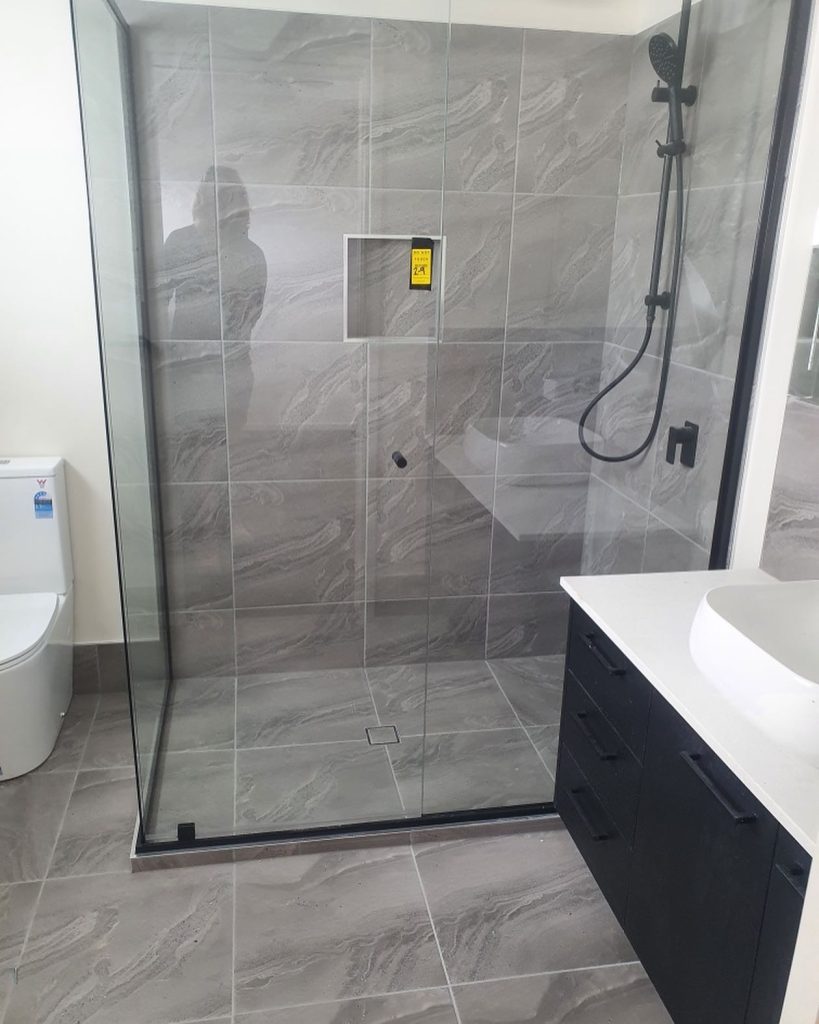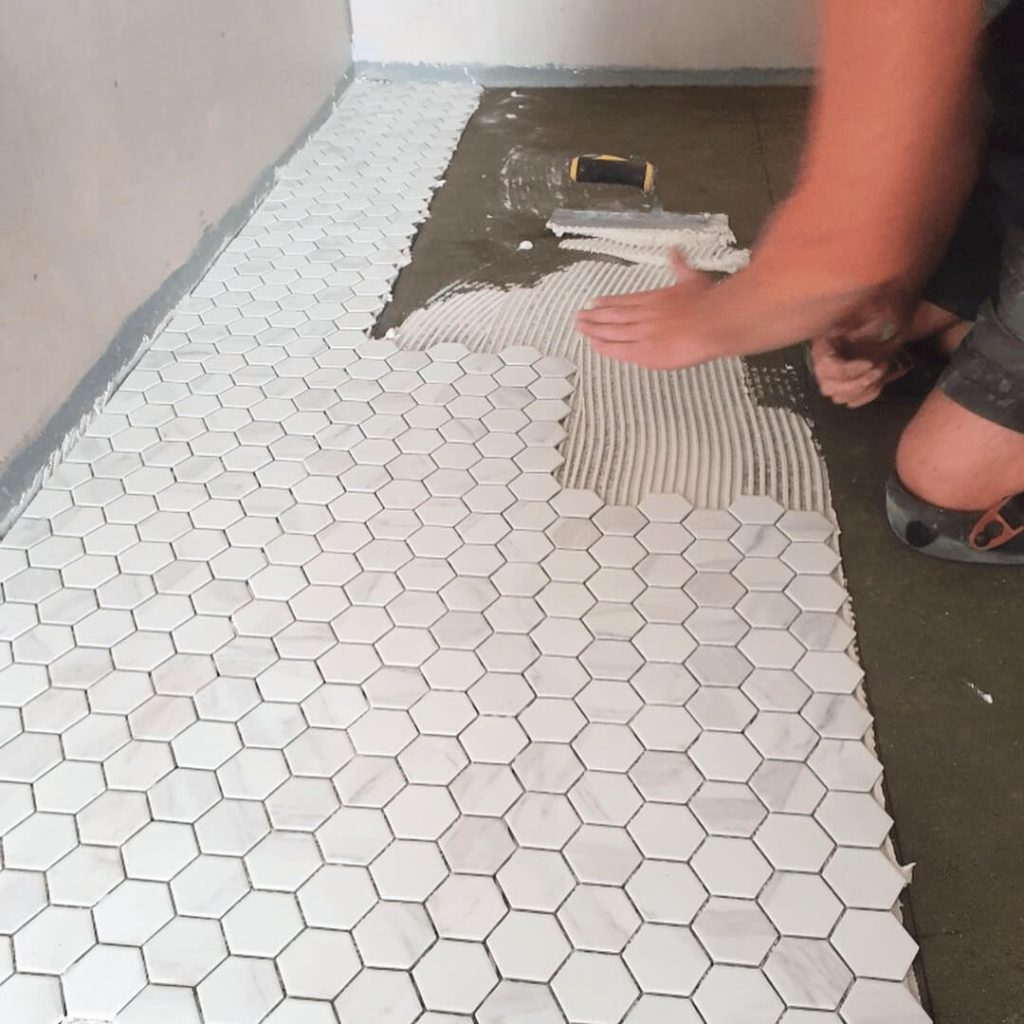Crucial Guidelines for Choosing Ideal Bathroom Tiles: Start by giving precedence to porcelain tiles for your flooring needs, as they provide remarkable durability and moisture resistance. Assess the thickness of your tiles meticulously to ensure suitability for both wall and floor applications. It is vital to maintain consistency across tile batches to achieve a cohesive aesthetic, and scrutinise slip ratings to ensure safety within your bathroom space. Furthermore, manage your budget effectively, concentrating on feature areas to create a visually stunning impact, while keeping labour costs reasonable by opting for standard-sized tiles.
The journey of selecting the perfect tiles for a bathroom renovation can indeed feel overwhelming due to the extensive array of choices available. With countless designs in subtle shades of white, beige, and grey, differentiating between them can be quite challenging, especially given the substantial variations in their price points.
Understanding the intricacies of tile pricing and the critical factors that influence your selection can empower you to make informed choices. This knowledge will aid you in avoiding expensive missteps, enabling you to save money while achieving a luxurious and polished finish in your bathroom, ultimately enhancing both the aesthetic appeal and value of your home.
This comprehensive guide provides invaluable insights specifically designed for Brisbane homeowners, ensuring that you can make intelligent, cost-effective choices when selecting bathroom tiles that not only fulfil your design aspirations but also align with your financial limitations.

Navigating the Complexities of Tile Pricing: Essential Factors to Consider
Assessing Material Composition for Enhanced Durability and Longevity
Porcelain tiles are widely revered for their dense structure, lower porosity, and exceptional durability when compared to standard ceramic tiles. These tiles are made from finer clays and undergo higher firing temperatures, leading to improved resilience, which usually correlates with a higher price point.
In bathrooms, where water exposure and durability are paramount, choosing porcelain tiles generally represents a prudent investment. However, it’s noteworthy that ceramic tiles have made significant advancements of late, offering budget-friendly alternatives that are suitable for wall applications and areas with minimal foot traffic.
How Tile Manufacturing Processes Influence Quality and Cost
The quality of bathroom tiles is not solely dictated by their material composition; it is also significantly affected by the manufacturing techniques employed in their production.
Single-fired tiles tend to be more affordable but may lack consistency in quality. In contrast, double-fired tiles feature richer finishes, vibrant hues, and enhanced durability, making them a worthwhile investment for discerning homeowners who prioritise quality in their renovations.
Tiles that boast rectified edges are expertly cut using advanced machinery, ensuring uniformity in size and shape. Although these tiles may come with a higher price tag, they allow for minimal grout lines, resulting in a seamless and modern appearance that is highly sought after among discerning homeowners.
Recognising Tile Thickness for Optimal Structural Integrity and Performance
When selecting tiles, it is essential to understand that flooring tiles must be thicker and more durable than those intended for wall applications.
For example, wall tiles typically range from 6 to 8mm in thickness, while floor tiles generally measure between 8 and 12mm.
- Wall tiles typically range from 6–8mm in thickness.
- Floor tiles usually measure between 8–12mm thick.
Investing more in thicker, heavy-duty tiles when only wall coverage is necessary can lead to unnecessary expenses. Matching tile thickness with the specific application is crucial for effectively maximising your budget and ensuring the longevity of your bathroom surfaces.
Balancing Brand Reputation with Material Quality in Tile Selection
Branding within the tile industry can often result in inflated prices without a corresponding increase in quality.
Renowned European brands such as Porcelanosa and Marazzi frequently command premium prices based predominantly on their reputation rather than the actual quality of their products.
Homeowners in Brisbane should concentrate on the genuine quality of materials, the firing methods employed, and slip resistance ratings rather than relying solely on brand names, ensuring a more informed and judicious purchase.

Effective Strategies to Maximise Your Tile Budget: Achieving Quality Within Financial Limitations
By making deliberate and strategic choices, you can achieve an elegant aesthetic for your bathroom without surpassing your budgetary constraints. Below are practical strategies to optimise your tile spending while achieving a stunning renovation.
Combine Premium and Standard Tiles for an Elegant Look:
Incorporate high-end feature tiles on a focal wall or within specific niches while using more affordable tiles in less visible areas. This method achieves a balance between aesthetics and cost-effectiveness, allowing for a luxurious appearance without overspending.
Select Larger Format Tiles to Minimise Grout Lines:
Larger tiles, such as those measuring 600x600mm, cover more surface area and reduce the number of grout lines. This not only creates an illusion of spaciousness in smaller bathrooms but also decreases labour costs due to quicker installation times.
Opt for Standard Sizes:
Choosing non-standard tile sizes can significantly increase both purchasing and installation costs. By selecting standard sizes, you ensure savings and simplify the installation process, making your renovation more efficient.
Seek Clearance or End-of-Run Stock for Significant Savings:
High-quality tiles are often available at discounted prices during the final stages of production runs. Purchasing discontinued tiles can lead to substantial savings, but always remember to buy an extra 10–15% for future repairs or replacements.
Prioritise Durable Tiles for Floors and High-Traffic Areas:
Allocate a larger portion of your budget towards tiles for flooring and wet zones where durability is critical. Conversely, utilise cost-effective options in dry or low-traffic spaces to maintain overall affordability.
Recognising Key Differences in Tile Quality for Informed Decisions
While many bathroom tiles may appear similar at first glance, substantial differences exist beneath the surface that can significantly affect your renovation experience and long-term satisfaction with your choices.
Shade Consistency Matters:
Inexpensive tiles often exhibit inconsistencies in colour across different batches. Always verify batch numbers prior to making a purchase to avoid mismatched tiles that can disrupt your carefully curated design.
Quality of Glazing is Crucial:
Lower quality glazes are prone to chipping and staining more rapidly, detracting from the overall appearance of your bathroom. High-quality glazing is resistant to scratches and absorbs less moisture, which is especially important in wet areas like showers.
Understanding Porosity Levels is Essential:
Highly porous tiles may lead to water ingress and cracking over time, a common issue with cheaper ceramics that can result in costly repairs. Opting for tiles with lower porosity will significantly enhance the durability and longevity of your surfaces.
Importance of Slip Resistance Ratings:
Bathroom floor tiles should meet or exceed an R10 slip resistance rating according to Australian standards, ensuring safety in wet conditions and preventing accidents that could lead to injuries or costly liabilities.
Failing to consider these essential factors can transform what seems to be a straightforward tile choice into a potentially costly repair and replacement scenario, making it imperative to weigh quality alongside aesthetics.
Exploring the Financial Implications of Grout Selection for Your Renovation
While the choice of tiles establishes the overall aesthetic for your bathroom, the selection of grout is equally vital, as it directly affects durability, visual appeal, and maintenance requirements of your tiling project. Choosing the right grout can significantly enhance the longevity of your installation and preserve its beauty over time.
Understanding Grout Costs and Material Types for Your Bathroom
Standard Budget Grout Options:
Traditional cement-based grouts are affordable and well-suited for low-moisture environments. However, they are porous and may discolour or crack over time, particularly in showers and high-traffic areas of the bathroom where moisture exposure is frequent.
Premium Grout Choices for Long-Term Value:
Grouts that are either epoxy-based or modified with polymers are resistant to stains, cracking, and moisture absorption. Although their initial costs may be higher, they often lead to long-term savings due to reduced maintenance and repair needs.
Premium grout options also offer vibrant, lasting colours that maintain their brilliance even with regular use, ensuring your bathroom retains its visual appeal for years to come.
How Tile Size Affects Grout Expenses: A Comprehensive Insight
Smaller tiles necessitate a greater amount of grout, influencing both material costs and labour during installation. Understanding this can assist you in making more informed budgeting decisions for your renovation project.
- Mosaic and small-format tiles require significantly more grout, both in terms of volume and increased labour costs during installation.
- Large-format tiles (600x600mm or larger) minimise grout lines, leading to lower material and labour expenses, making them a cost-effective option for many homeowners.
If you choose smaller tiles for aesthetic reasons—such as penny rounds or subway patterns—be sure to budget for premium grout. The visibility of grout lines elevates the need for a durable, stain-resistant product to ensure the longevity and aesthetic quality of your installation.

Your Comprehensive Tile Purchasing Checklist for Successful Bathroom Renovations
- Prioritise porcelain tiles for flooring and wet zones to ensure maximum durability and performance.
- Choose ceramic tiles for walls where applicable, as they provide cost-effective solutions without compromising quality.
- Confirm tile thickness based on the intended installation area to guarantee structural integrity and longevity.
- Verify batch consistency to avoid colour mismatches that can disrupt your overall design and aesthetic vision.
- Check slip ratings for bathroom flooring to ensure safety in wet areas, thus safeguarding against potential accidents.
- Invest in high-quality tiles for floors and splash zones where durability is essential to withstand daily wear and tear.
- Be strategic with your budget: allocate funds wisely, focusing on areas that provide visual interest and impact while remaining within your financial limits.
Feel free to reach out to us for more innovative tiling ideas that can help keep your bathroom renovation within budget while ensuring style, functionality, and lasting beauty.
The Article: Tile Selection to Maintain Your Bathroom Renovation Budget first appeared on https://writebuff.com
The Article Tile Selection for a Budget-Friendly Bathroom Renovation Was Found On https://limitsofstrategy.com
The Article Budget-Friendly Bathroom Renovation: Tile Selection Tips found first on https://electroquench.com

